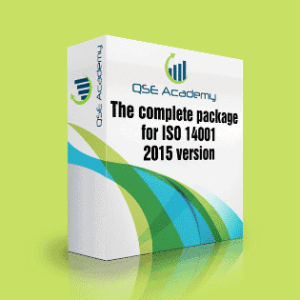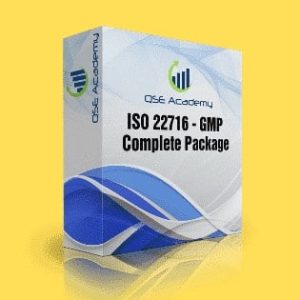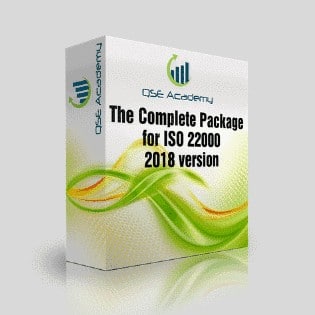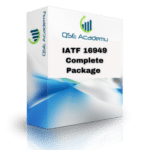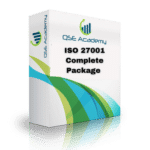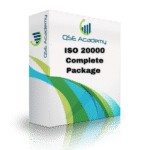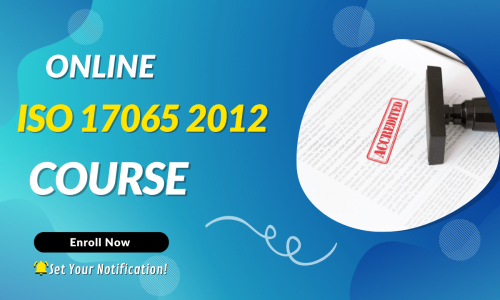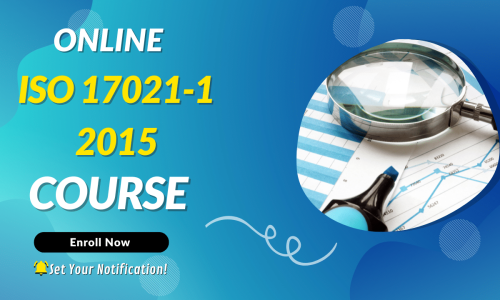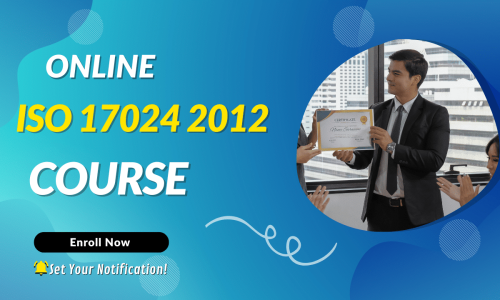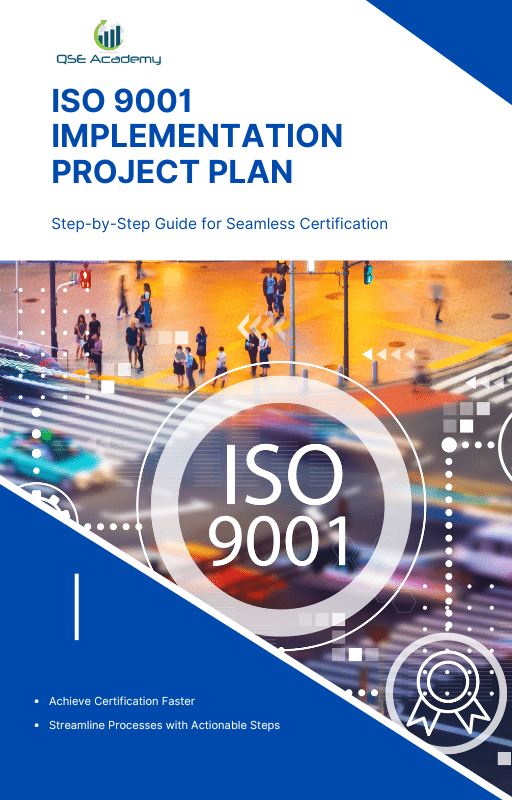What are the ISO 9001 2015 chapters?
What are the ISO 9001 2015 chapters?
If you’ve ever come across ISO 9001:2015, you’ve probably wondered how such a well-known standard for quality management is organized. The short answer? It’s all about structure—and that’s where the ISO 9001 2015 chapters come in.
These chapters, also known as clauses, act as the building blocks of the standard. They break down everything you need to know to create and maintain an effective Quality Management System (QMS). Each chapter focuses on a specific area, like leadership, planning, or operations, and together they create a roadmap to help organizations deliver consistent, high-quality products or services.
But why is this structure so important? Think of the ISO 9001 2015 chapters as a step-by-step guide. Instead of overwhelming you with vague requirements, the chapters are laid out in a logical flow that’s easy to follow. Whether you’re a small business owner or part of a large organization, understanding these chapters is the key to making ISO 9001:2015 work for you.
In this article, we’ll dive into what each of the ISO 9001 2015 chapters is about, why they matter, and how they work together to create a strong QMS. Ready to break it down? Let’s get started!
Overview of the ISO 9001 2015 Chapters
Now that we’re diving into the details, let’s get a bird’s-eye view of the ISO 9001 2015 chapters. These chapters are what make the standard so effective—it’s like having a carefully crafted blueprint for building a quality-focused organization. The chapters cover everything from understanding your organization’s goals to planning, managing daily operations, and continuously improving.
The beauty of the ISO 9001 2015 chapters is their logical flow. Each chapter builds on the previous one, creating a system that feels cohesive and easy to navigate. For example, before you can jump into operations, you need to understand your organization’s context and plan for risks and opportunities. It’s all designed to guide you step by step.
Why Is the Structure of the ISO 9001 2015 Chapters Important?
Think of the ISO 9001 2015 chapters like the chapters in a book. Imagine trying to read a book where the chapters were out of order—it would be confusing, right? ISO 9001:2015 avoids that by organizing the chapters in a way that makes sense for any organization, no matter the industry or size.
The chapters follow the Annex SL structure, which is a standardized format used across all modern ISO standards. This means if your business decides to adopt other standards, like ISO 14001 for environmental management or ISO 45001 for health and safety, they’ll align seamlessly with the structure of ISO 9001:2015.
The 10 ISO 9001 2015 Chapters at a Glance
Here’s a quick overview of the ten chapters that make up ISO 9001:2015:
- Scope: This chapter sets the boundaries and explains what the standard is all about. It’s like the introduction to your QMS.
- Normative References: Think of this as the “see also” section. It points to other useful standards that complement ISO 9001:2015.
- Terms and Definitions: Here, you’ll find all the key terminology explained, so there’s no confusion about what certain terms mean.
- Context of the Organization: This chapter focuses on understanding your business environment, internal and external factors, and key stakeholders.
- Leadership: A big one! This chapter highlights the role of top management in driving quality and creating a culture of excellence.
- Planning: Here, you’ll learn how to set objectives, identify risks and opportunities, and create action plans to achieve your goals.
- Support: This chapter covers resources like people, infrastructure, and training—everything your team needs to make the QMS work.
- Operation: The heart of the standard, this chapter focuses on managing processes to deliver quality products and services.
- Performance Evaluation: This chapter helps you track how well your QMS is working through monitoring, measuring, and audits.
- Improvement: The final chapter emphasizes continuous improvement and fixing issues to keep moving forward.
How These Chapters Work Together
The ISO 9001 2015 chapters aren’t standalone—they’re interconnected. For example, Chapter 5 on Leadership sets the tone for Chapter 6 on Planning, while Chapter 9 on Performance Evaluation feeds into Chapter 10 on Improvement. It’s all designed to ensure your QMS is more than just a collection of processes—it’s a system that evolves and grows with your business.
Next, we’ll take a closer look at each chapter to understand its purpose and how it fits into the bigger picture. Stick with me, and you’ll see how these chapters can transform the way your organization approaches quality management!
A Closer Look at Each ISO 9001 2015 Chapter
Now that we’ve covered the big picture, let’s zoom in on each of the ISO 9001 2015 chapters to understand what they’re all about. Each chapter serves a specific purpose in creating a strong and effective Quality Management System (QMS). By breaking it down step by step, you’ll see how these chapters guide your business toward consistent quality and continuous improvement.
Chapter 1: Scope
This first chapter is like the introduction to a book—it sets the stage. It defines what ISO 9001:2015 is all about and explains its purpose. Essentially, it outlines the boundaries of the standard, specifying that it applies to any organization aiming to consistently meet customer and regulatory requirements.
Why is this important? Because understanding the scope of the ISO 9001 2015 chapters ensures you know exactly what’s covered and what’s expected from your QMS.
Chapter 2: Normative References
Think of this chapter as the “see also” section. It doesn’t include any specific requirements but points to other documents that can be helpful. For ISO 9001:2015, this usually means the terms and definitions provided in the ISO 9000 standard.
While it’s a short chapter, it’s essential for anyone who wants to dive deeper into the terminology or foundational concepts behind the standard.
Chapter 3: Terms and Definitions
Clear communication is the key to success, right? That’s exactly what this chapter is about. It defines key terms used throughout the ISO 9001 2015 chapters, ensuring everyone speaks the same language.
For example, it explains what “nonconformity” means in the context of ISO 9001, so there’s no room for misunderstandings when implementing or auditing your QMS.
Chapter 4: Context of the Organization
This is where the real work begins! Chapter 4 helps you understand the environment in which your organization operates. It asks you to identify internal and external factors that could impact your ability to achieve your goals.
It also emphasizes identifying stakeholders and their expectations. By addressing the “context,” you’re laying the foundation for a QMS that’s tailored to your business’s unique needs.
Chapter 5: Leadership
Leadership plays a huge role in the success of any QMS, and this chapter highlights its importance. It focuses on the responsibilities of top management, from setting a clear vision to ensuring the QMS is integrated into the organization’s everyday activities.
The chapter also emphasizes creating a culture of quality where everyone feels accountable for meeting the organization’s goals. It’s not just about policies—it’s about action and involvement.
Chapter 6: Planning
Here’s where the focus shifts to action. This chapter requires you to identify risks and opportunities, set quality objectives, and create plans to achieve those objectives.
Planning is all about being proactive rather than reactive. By addressing potential risks and opportunities upfront, you’re setting your business up for success. It’s a key part of the ISO 9001 2015 chapters that ensures your QMS remains forward-thinking.
Chapter 7: Support
A QMS is only as strong as the resources behind it, and that’s what Chapter 7 is all about. This includes everything from having the right people and infrastructure to providing training and maintaining clear communication.
For example, if your team isn’t trained on a specific process, how can they follow it effectively? This chapter ensures your organization has the tools and knowledge it needs to succeed.
Chapter 8: Operation
This chapter is where the magic happens—it’s all about the day-to-day activities of your organization. It covers everything from planning and controlling processes to delivering products or services that meet customer requirements.
In short, Chapter 8 ensures that what you do on a daily basis aligns with the quality standards set out in your QMS.
Chapter 9: Performance Evaluation
How do you know if your QMS is working? Chapter 9 helps you figure that out. It focuses on monitoring, measuring, and analyzing your performance.
This includes conducting internal audits, gathering customer feedback, and using data to identify areas for improvement. Performance evaluation is a crucial part of ensuring the effectiveness of your QMS.
Chapter 10: Improvement
The final chapter emphasizes continuous improvement—because there’s always room to get better, right? It focuses on addressing nonconformities, making corrections, and finding ways to enhance processes.
Improvement is the ultimate goal of the ISO 9001 2015 chapters. By constantly refining your QMS, you’re not just meeting standards—you’re raising the bar for your organization.
How These Chapters Come Together
Each chapter of ISO 9001:2015 is like a piece of a puzzle. On its own, it’s important, but together, the ISO 9001 2015 chapters create a complete picture of a well-functioning Quality Management System.
In the next section, we’ll explore why understanding these chapters is so crucial for implementation, auditing, and continuous success. Stick around—you’re getting closer to mastering ISO 9001:2015!
Why Understanding ISO 9001 2015 Chapters Matters
Alright, now that we’ve gone through the ISO 9001 2015 chapters, you might be thinking, “Why is it so important to understand these chapters in detail?” Great question! Understanding these chapters isn’t just about memorizing the structure—it’s about making the most out of ISO 9001:2015 and applying it effectively in your organization. Let’s break down why it matters.
1. Smoother Implementation
When you know the ISO 9001 2015 chapters inside and out, implementing the standard becomes much easier. Each chapter provides specific guidance on what needs to be done, so you’re not left guessing or trying to reinvent the wheel.
For example:
- Chapter 4 helps you set the foundation by understanding your organization’s context.
- Chapter 6 ensures you’re planning proactively by addressing risks and opportunities.
- Chapter 8 guides you through the nitty-gritty of your daily operations.
By following the chapters step by step, you can create a Quality Management System (QMS) that’s both effective and tailored to your business.
2. Better Auditing Preparation
Let’s face it—audits can be stressful. But when you have a clear understanding of the ISO 9001 2015 chapters, you’ll be much better prepared. Auditors typically review your QMS in the context of these chapters, so knowing what each one covers will help you address their questions confidently.
For instance:
- If an auditor asks about leadership’s role in the QMS, you’ll know that Chapter 5 holds the answers.
- If they want to see how you manage nonconformities, you can point them to Chapter 10 on improvement.
Understanding the chapters gives you a roadmap for a smoother audit experience and helps you showcase your compliance with confidence.
3. A Stronger, More Connected QMS
The ISO 9001 2015 chapters are designed to work together seamlessly. When you understand how they connect, you can create a QMS that’s cohesive and efficient.
For example:
- Chapter 7 ensures your team has the resources and training to follow the plans laid out in Chapter 6.
- Chapter 9 helps you evaluate how well the processes in Chapter 8 are performing.
By viewing the chapters as interconnected pieces of a larger puzzle, you’ll build a QMS that’s not only compliant but also effective in achieving your quality goals.
4. Continuous Improvement Becomes Second Nature
At its core, ISO 9001:2015 is all about continuous improvement, and the chapters are structured to make that easier.
When you regularly revisit chapters like Chapter 9 (Performance Evaluation) and Chapter 10 (Improvement), you’re creating a habit of monitoring, analyzing, and refining your processes. This keeps your organization adaptable and ready to tackle challenges head-on.
Plus, understanding how the chapters promote improvement helps you identify opportunities to innovate and stay ahead of the competition.
5. Aligning Your Team
One of the most significant benefits of understanding the ISO 9001 2015 chapters is that it helps get everyone on the same page. When leadership, management, and employees understand how each chapter contributes to the QMS, it creates a sense of shared purpose and accountability.
For example, Chapter 5 emphasizes the role of leadership in promoting quality, while Chapter 7 highlights the importance of supporting employees with resources and training. When everyone understands their role, the QMS becomes a collaborative effort rather than a top-down directive.
Bringing It All Together
Understanding the ISO 9001 2015 chapters isn’t just about meeting the standard—it’s about leveraging it to create a QMS that works for your organization. From smoother implementation to better audits, stronger teamwork, and continuous improvement, these chapters are the foundation for achieving success with ISO 9001:2015.
In the next section, we’ll recap everything we’ve covered and highlight how you can take the next steps toward mastering ISO 9001:2015. Stick around—you’re almost there!
Conclusion: Mastering the ISO 9001 2015 Chapters
So, we’ve covered a lot of ground in this article! From understanding what the ISO 9001 2015 chapters are to why they’re essential for creating a robust Quality Management System (QMS), it’s clear that these chapters provide more than just a framework—they offer a practical guide for improving your organization’s processes and delivering consistent quality.
The beauty of the ISO 9001 2015 chapters lies in their simplicity and logical flow. Each chapter addresses a specific aspect of your QMS, from defining your organization’s context (Chapter 4) to planning (Chapter 6), daily operations (Chapter 8), and continuous improvement (Chapter 10). Together, they create a complete system that helps businesses of all sizes and industries achieve their quality goals.
Why Understanding the ISO 9001 2015 Chapters Is Key
Let’s recap why it’s so important to dive into these chapters:
- They make implementation easier by breaking down the standard into manageable steps.
- They help you prepare for audits with a clear understanding of what’s required.
- They create a stronger, more connected QMS by showing how all the pieces fit together.
- They encourage continuous improvement, ensuring your business stays agile and competitive.
By mastering the ISO 9001 2015 chapters, you’re not just meeting compliance requirements—you’re building a system that can adapt, evolve, and help your organization thrive.
Taking the Next Step
If you’re feeling inspired to implement ISO 9001:2015 or improve your current QMS, the best place to start is by revisiting the chapters we’ve discussed. Whether you’re focusing on leadership, planning, operations, or performance evaluation, each chapter offers valuable insights that can transform the way your business operates.
Remember, ISO 9001:2015 isn’t just about processes—it’s about people, goals, and creating a culture of quality. And it all starts with understanding the ISO 9001 2015 chapters and putting them into action.
So, what’s your next move? Take some time to review the chapters, identify areas for improvement, and start building a QMS that works for you. You’ve got this!
Looking for More Resources on ISO 9001?
Looking for ISO 9001 Resources Tailored to Your Industry?
If this article helped clarify ISO 9001, take the next step with our industry-focused tools designed to simplify your certification journey:
📦 ISO 9001 Documentation Kits by Industry: Whether you’re in manufacturing, construction, consulting, or healthcare — we have complete, ready-to-use documentation tailored for your sector.
🎓 Online ISO 9001 Training: Learn how to implement ISO 9001 effectively with our easy-to-follow video lessons, real-world examples, and practical exercises.
📋 ISO 9001 Checklist: Download our step-by-step checklist to ensure your QMS meets all the 9001:2015 requirements from start to finish.
These resources are crafted to save you time, reduce stress, and help you achieve certification with confidence. Choose your industry and start now!

make ISO standards less intimidating and more approachable for everyone.
Whether it’s ISO 9001, ISO 22000, or the cosmetics-focused ISO 22716,
I’ve spent my career turning complex jargon into clear, actionable steps
that businesses can actually use. I’m not here to call myself an expert—I prefer “enthusiast” because I truly love what I do.
There’s something incredibly rewarding about helping people navigate food safety and quality management systems
in a way that feels simple, practical, and even enjoyable.
When I’m not writing about standards, you’ll probably find me playing Piano 🎹, connecting with people, or diving into my next big project💫.
- I’m an engineer specialized in the food and agricultural industry
- I have a Master’s in QHSE management and over 12 years of experience as a Quality Manager
- I’ve helped more than 15 companies implement ISO 9001, ISO 22000, ISO 22716, GMP, and other standards
- My clients include food producers, cosmetics manufacturers, laboratories, and service companies
- I believe quality systems should be simple, useful, and efficient
- Outside of work, I play piano and love learning something new every day
Let’s make ISO less about stress and more about success! 🙏








